Plus-size riders, those who aren’t afraid to pack a heavy load in their rack, and city commuters who give their friends rides on their bikes: Have you ever wondered if bicycle tires sport a weight limit?
All bicycle tires have a weight limit. This limit is anywhere from 110 lbs (50 lbs) to 175 lbs (75 kg) per tire, with narrow tires able to carry less and wide tires able to carry more.
However, the actual load capacity of your bike is determined not only by the tires, but also by the wheel size, number of spokes, weight distribution, and a number of other factors we will discuss in a moment.
As a general rule of thumb, your tires’ weight limit is determined by the maximum tire pressure that their carcasses can support. In other words, tires you inflate to a higher PSI can generally haul more than those you inflate to a lower PSI.
If you get a lot of flats and you see your friends going for months without problems, you may think that the root cause is in your weight. But, nine times out of ten, it’s really in your bike maintenance habits.
If you’re the type of rider who frequently gets pinch flats, you’re probably underinflating your tires and/or not topping them up with air every 1-2 weeks. (Bike tires lose air from sitting, even if they’re brand new.)
Another thing you need to know as a bike owner is that, depending on how much you way, you may want to consider slightly overinflating your tires.
The heavier you are, says René Herse, the higher the pressure at which you should keep your tires. The manufacturer has a useful tire pressure calculator on its website that recommends the right PSI based on the tire width and combined weight of the bike and rider.
This is also backed by Lee McCormack and Joe Lindsey of Bicycling, who say that the more you weigh, the higher your tire pressure should be. If a rider who weighs 165 lbs (75 kg) pumps their tires to 100 PSI, they add, a 200 lbs (90 kg) rider should do so to 120 PSI, and so on.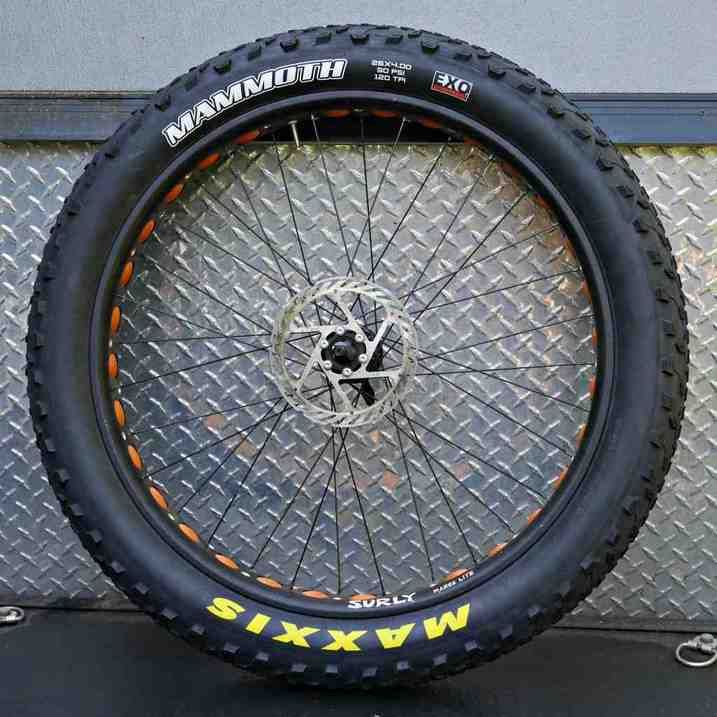
Tip: Although much of a bike’s design is intended to distribute the weight of the rider evenly, for obvious reasons, the rear tire carries most of your weight than the front one does. So keep yours it slightly more inflated.
The golden rule is that narrow tires are able to carry less weight because, all other things equal, they inflate to a higher pressure than wide tires do.
For example, the maximum inflation pressure of 38-mm tires manufactured by René Herse Cycles is 75 PSI. At this pressure, the tires are able to support about 330 lbs (150 kg) of weight, while 26-mm tires at 105 PSI can support up to 240 lbs (110 kg).
You will rarely find a good-quality tire for a tandem that’s narrower than 30 mm. That has to do not only with the double-weight that needs to be supported but also with the pressure that is required.
If you are a large rider as I am (on good months, I weigh 200 lbs/90 kg) and you decide to go for narrow tires, they would require very high pressure in order to not get pinch flats all of the time.
Tip: Get yourself a good pair of tires, inflate them slightly more than recommended, and don’t forget to top them up every time you ride. (Racers sometimes go as high as 150-160 PSI.)
When picking the right type of tires for your weight, you shouldn’t forget about the strength of the rims as well. High-performing racing bikes, for example, are not designed for thick riders, so the type of the tires wouldn’t really matter in such a case.
The good news is that the absolute majority of bikes are capable of supporting riders that weigh up to 200 lbs (90 kg) and most will be able to support 300 lbs (135 kg).
Tip: Go for rims with more spokes. Spokes connect the hub to the rim and support the weight of the rider. A high-quality saddle can also help to spread the pressure of that weight more evenly.
The weight limit provided by the manufacturer is not the tire’s failure point.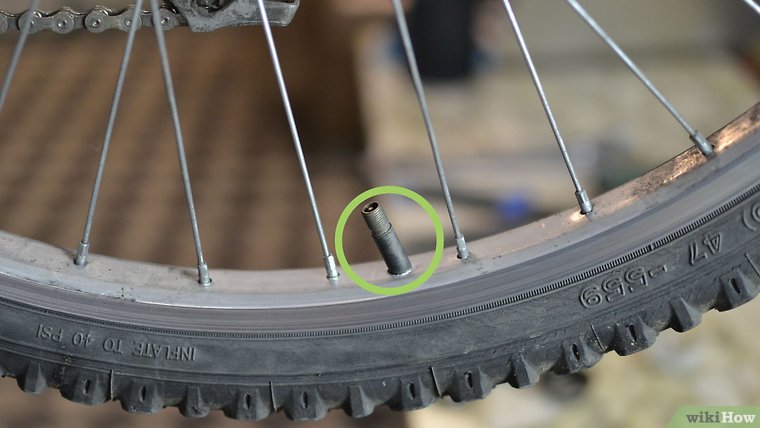 The chances are high that nothing will happen if you load a few extra pounds on your two-wheeled friend.
The chances are high that nothing will happen if you load a few extra pounds on your two-wheeled friend.
However, riding the bike at peak weight capacity increases the general wear and tear of the components. It also becomes a lot easier for the bike to get damaged—not only the actual tires, but also the spokes, the rim, and even the brake pads might suffer.
Even though it’s not quite an exact science as there are way too many factors to consider, you should definitely take the weight limits into consideration when choosing the tires and the bike.
The right tires will simply make your whole bike-riding experience a lot safer and more pleasant, and that’s exactly what you’re going for, right?
Asked
Modified 3 years, 10 months ago
Viewed 85k times
I'm pretty heavy (~150kg/330lbs) but being fond of cycling in the past, I decided to buy a bike, and maybe try to lose a few kilos with it.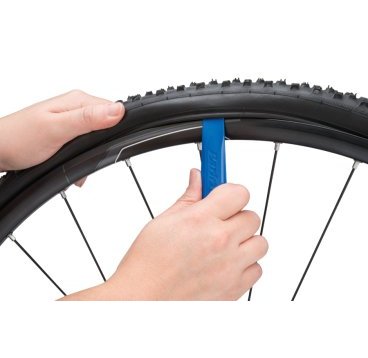 I didn't have too much time for looking around, so I bought a used (but in excellent shape) Scott Aspect 20 from some guy living close by.
I didn't have too much time for looking around, so I bought a used (but in excellent shape) Scott Aspect 20 from some guy living close by.
Now I'm wondering if the tires/wheels can hold me, and what pressure should I pump the tires to.
The rims are Alex TD17 32H and the tires are Schwalbe Hurricane 26x2.0 (2.5-5.0 bar). I'm planning to ride within the city (so mostly paved surfaces, maybe a few unpaved sections here and there).
5
Offhand, that bike looks pretty good for your needs, aside from the front suspension and the 32H wheels. The tires are good and wide, and if you keep them well inflated (above 4 bar) they should handle your weight OK.
The front shock has lockout, so if it sags too much you can just keep it locked most of the time. Of course, you will be stressing the wheels and tires, in particular, beyond what's "normal", so you may experience broken spokes and the like.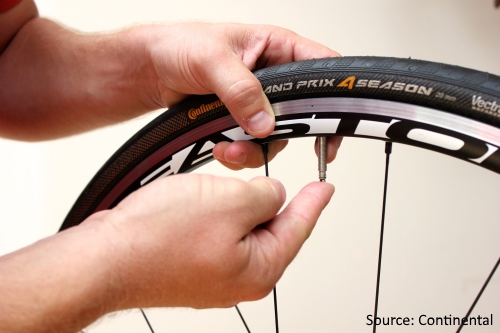 But since you won't be going offroad and probably won't jump too many curbs, you shouldn't do too badly.
But since you won't be going offroad and probably won't jump too many curbs, you shouldn't do too badly.
You may find the seat not to your liking, but give it a try, and then shop around for something that looks better.
It's not a bike that will last 20 years with a 300lb rider, but you can probably get 2-3 years out of it, by which time you will be down to 80 kg and in the market for a carbon racer.
2
According to the people at Scott, the general weight limit for a rider is 110 kg. You are significantly above this, so the manufacturer doesn't necessarily support you on that. The wheels durability depends a lot on who built them and how well they were built and if they have taken any damage.
You are in a YMMV (and at your own risk) range by sticking with that bike and wheelset (I'd probably go for more spokes), but you may want to go to a bike shop and get the bike tuned up to make sure the wheels are in good condition and what not, and hope for the best (and do repairs as spokes break and what not, if they do). It helps if you don't ride like a hooligan as well (like not dropping off curbs and what not). I think this is a good article.
It helps if you don't ride like a hooligan as well (like not dropping off curbs and what not). I think this is a good article.
Trek specifies the max rider weight on most of their bikes to be around 300 lbs, which is probably closer to more comfortable than that.
Finally, fit is arguably more important for big riders than small riders.
The realistic thing to do (all at your own risk of course) is get the bike checked out to make sure its in good condition, and ride and replace things as they break. Avoid road hazards and be careful. Many bigger riders exceed their quoted weight limits on their bikes, but the factor is usually not around 35-40%. You may also want to look at some bike forums for big riders riding similar bikes.
Some other things to consider are recumbent bikes/trikes. These may be a bit more comfortable as well. There are also some manufacturers which build heavier rider-oriented bicycles (e.g. Worksman Cycles, which coincidentally today I found is the oldest bicycle manufacturer in the US, stocks things which can take up to quoted 500 pounds [though, your bike shop probably knows some bikes which have worked for heavy riders in your area]).
3
I'm 345lbs, 5'10", 32in inseam (hence why I need a bike, walking on these knees ain't gonna happen, lol). I did research and went with a Specialized Sirrus Elite Alloy which is rated at 300lbs. I keep the air near the 95psi limit and ride only on the streets. No issues after a year so far. It's had one full checkup & adjustment and all was well. Just mentioning this for readers my size that are looking around. The Specialized Rockhopper MTB w/29" wheels is also a good choice and rated 300lbs. If you are big like me, carbon frame is OUT, you need aluminum.
1
I ride at 275lbs (125 kg) and haven't had problems with good quality older steel frame so called 10 speeds. I upgrade the old freewheel systems to the newer cassette systems. Even at 185lbs (84 kg) I used to bend rear freewheel axles. Cassette hub design does away with that problem.
I break a rear sprocket side spoke every 2 to 3 years using 14 gauge stainless spokes.
The gentleman commenting about buying a lighter bicycle not providing the performance gain you wanted is in my experience true. In the 1970's I rode in the Davis, CA, Double Century one day ride and there was a guy riding a stock Schwinn Varsity who rode the ride up near the front all the way to the end. His bike was 10 to 15lbs (4-7 kg) heavier than all the race bikes and I don't recall him wearing cleated shoes either.
Wheels should be made with 36 spoke rims and hubs with 13/14 gauge spokes. If they break consider 12 gauge spokes or 40/48 hole hubs. Rims for 40/48 holes are much harder to come by and selection is very limited. Electric bicycle shops deal with 12 gauge spokes and they are not hard to get. 12 gauge spokes do necessitate drilling hub and rim holes a small amount bigger. I've done this in the past and had good results. Be mindful of your front fork when ploughing into potholes and other obstacles. Be careful with the front brake so as not to bend the fork back.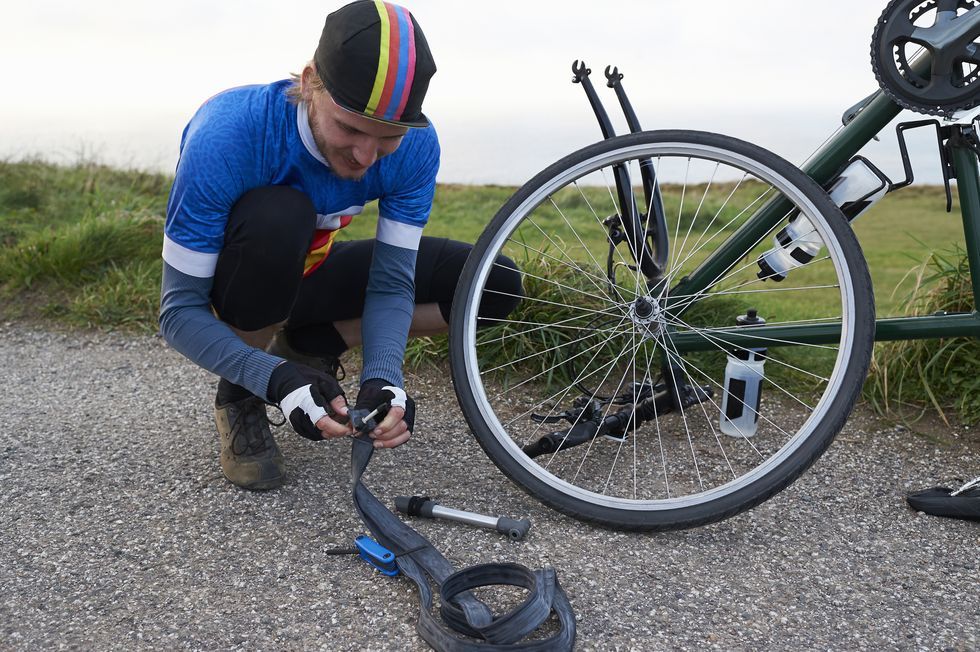 Older all steel chromoly MTB's with non suspension steel forks are great frames for heavier riders. Good luck
Older all steel chromoly MTB's with non suspension steel forks are great frames for heavier riders. Good luck
Sign up using Google
Sign up using Facebook
Sign up using Email and Password
Required, but never shown
Required, but never shown
By clicking “Post Your Answer”, you agree to our terms of service, privacy policy and cookie policy
Contents
A bicycle is not only a vehicle, but also a way of life.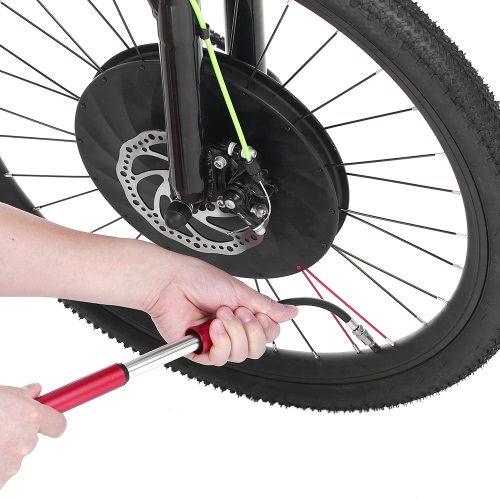 It gives a good mood, gives an excellent charge of vivacity, helps the cyclist to keep himself in good shape. The bicycle unites people of different ages and genders, does not make differences in the physique or weight of the cyclist.
It gives a good mood, gives an excellent charge of vivacity, helps the cyclist to keep himself in good shape. The bicycle unites people of different ages and genders, does not make differences in the physique or weight of the cyclist.
Everyone can join such a life. And the myth that large people who do not fall under the average norms, the bike is not available, is a delusion. You just need to know how to choose a bike and modify it for yourself.
With its small dimensions and apparent fragility, the bike is able to withstand heavy loads. Conventional, designed for a mass, average audience, it easily transports a cyclist weighing up to 110 kg, without any consequences for itself.
For those people who do not fit this weight criterion, bikes are needed stronger. And the world has to offer. They will, of course, cost more. But who can stop it?
Since most standard bikes are equipped with basic features and are not designed for obese and bulky people, additional items are indispensable.
This design element is central, and the right choice will mean a comfortable ride and a long service life.
The main indicators of bicycle frames are their properties: torsional stiffness (resistance to deformation), strength and ability to dampen vibrations.
Main selection criteria:
Size (basic) is determined by the distance between the cut of the seat tube and the center of the bottom bracket. All other dimensions of the bicycle frame are directly proportional to the main frame, i.e. when you change the main size, the others change proportionally.
All frames are marked in inches, centimeters or conventional units (for example, L, XL, XXL - as in clothes).
Select the frame size using special tables. There are two sizes for one height. The smaller one suggests using the bike for speed, the larger one for convenience.
In the case of obese people, the frame size should be chosen one size smaller - it will be easier to sit on the bike.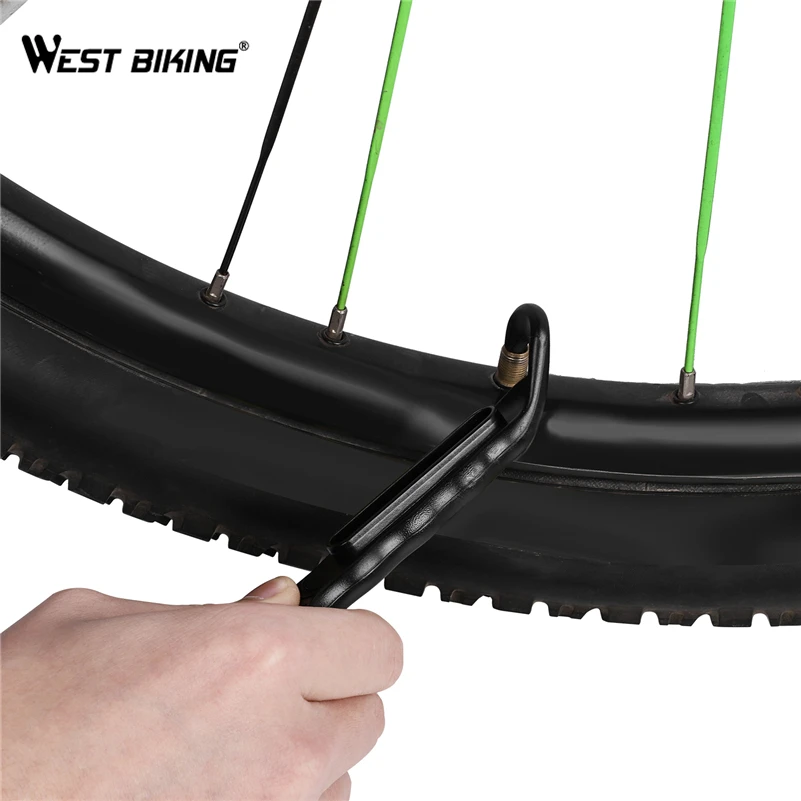
The size of the bike is also easy to determine by eye. If the distance between the bicycle frame and the cyclist's crotch is the width of his hand, then this is acceptable.
Bicycle frame material. The most common are steel, aluminum and carbon alloys.
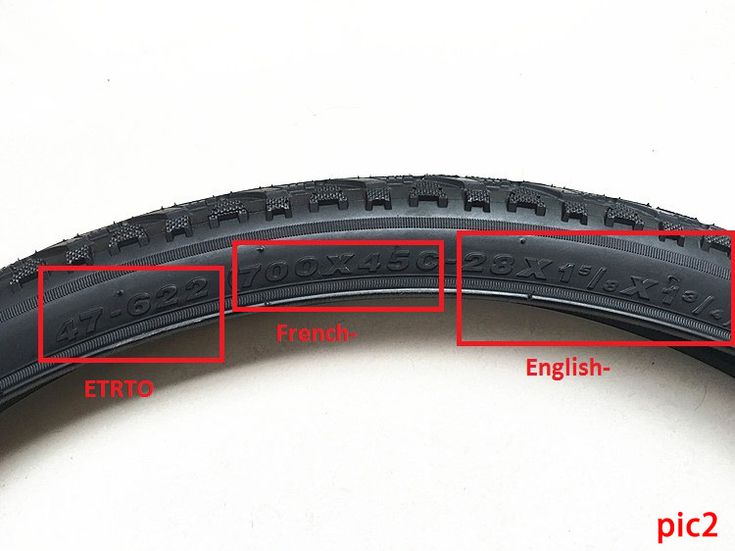
The frame for overweight people must be properly designed.
There are no spring-loaded bicycle shock absorbers capable of long life under heavy loads. The maximum that is recommended for heavy cyclists is high-quality vacuum shock absorbers.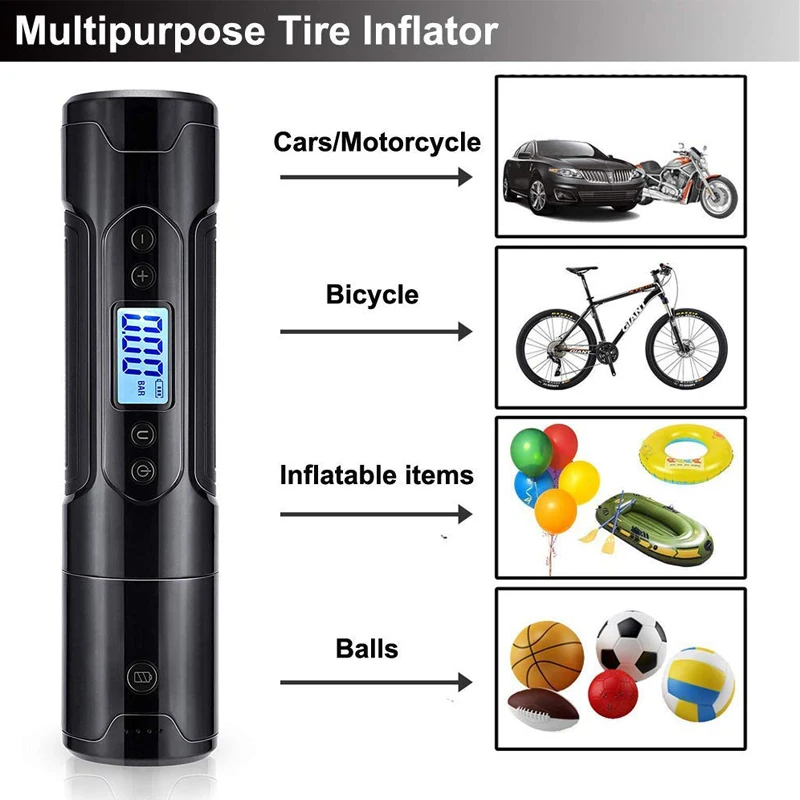
One of the first things to “suffer” from heavy loads is the front wheel of a bicycle. So it needs to be strengthened.
This does not mean that a new one is to be assembled immediately. If you take care of the wheels and carry out technical work: regularly tighten the spokes and check their tension with a strain gauge, then even under a load of 150 kg they will leave for more than one season.
With a variety of rims on the market, choosing the right one is easy.
Bicycle rims must be: strong, stiff and light. They are made of steel, aluminum and carbon.
Divided by type into :
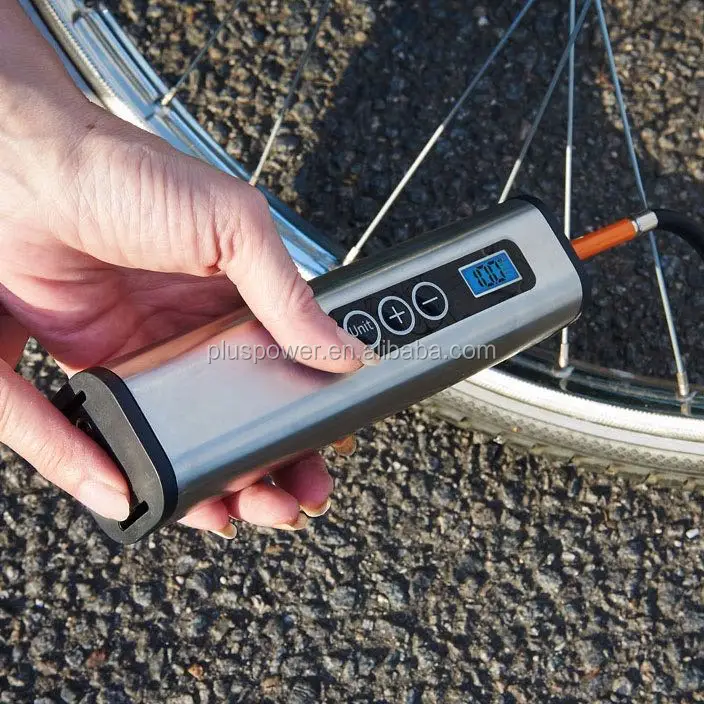 Installed on the vast majority of bicycles. Due to the aluminum alloy from which they are made, they are light and durable.
Installed on the vast majority of bicycles. Due to the aluminum alloy from which they are made, they are light and durable. Tubeless rims . UST (Universal System Tubeless) technology is used.
Depending on the type of brake, the above rims are divided into :
For "heavyweights" it is preferable to choose double or triple rims, reinforced (with additional reinforcement inside).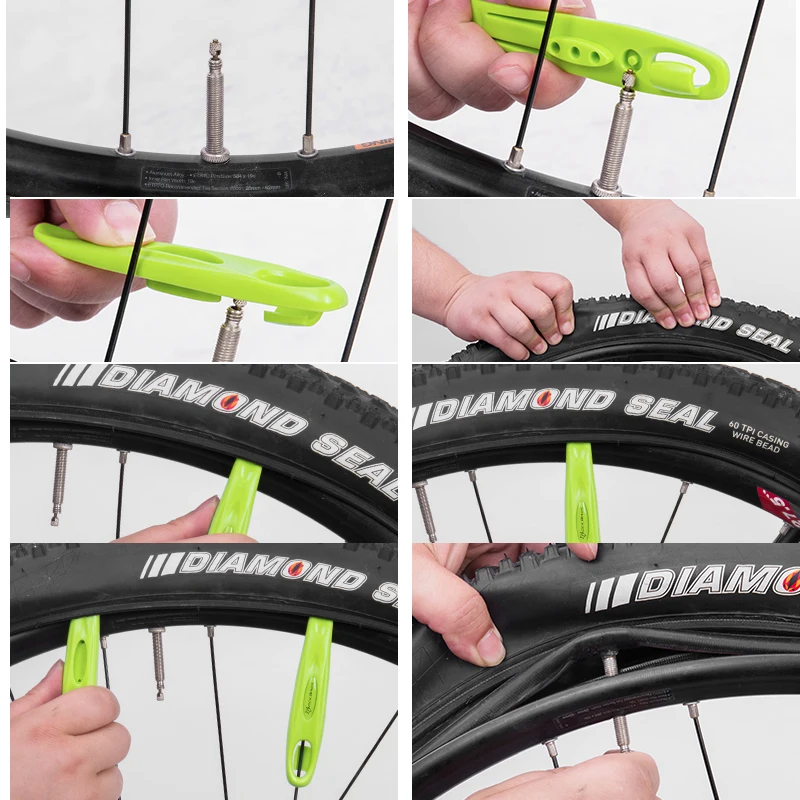 To increase rigidity, you can use rims with a high profile and narrow sidewalls (for disc brakes).
To increase rigidity, you can use rims with a high profile and narrow sidewalls (for disc brakes).
In addition to the rims, there are cast bicycle wheels. They are made of carbon fiber and have increased strength and rigidity, and are able to withstand the heaviest cyclist. The only downside is the extremely high price.
Spokes for heavy loads should be selected appropriately. On the acquisition of them is better not to save. This will help save the rim and your time.
Made from steel, carbon fiber or titanium. They come with a single or double thickening, with a combined section.
Wheels are spoked in two ways: radial and tangential (cross).

The most common way of knitting in three crosses, both for the front and rear wheels.
The ideal cross spoke is four, since the angle between the spoke and the wheel radius is 90 degrees, which is the best situation for torsional reliability. However, in this case, the spoke overlaps (overlaps) on the head of the adjacent one, which can affect the service life.
Knitting and systematically tightening the needles is recommended by specialists.
When choosing a bike for heavy passengers, you need reliable and powerful brakes.
Types of brakes:
 Efficiency is reduced in bad weather. Mounted on road bikes. Varieties: tongs, U-brake, cantilevers and V-brake.
Efficiency is reduced in bad weather. Mounted on road bikes. Varieties: tongs, U-brake, cantilevers and V-brake. Of the minuses: high cost, weight, interchangeable parts from different companies, require a certain hydraulic fluid.
Conclusion: for people over 110 kg, disc brakes should be preferred.
Also, to increase the power, if necessary, change the brake router with a larger diameter, 180 mm and above.
The metal frame of the saddle can bend under heavy weight. To choose a saddle for overall people you need to be stronger and better leather, equipped with powerful springs. The seatpost is preferably replaced with a longer one.
Pedals, on a budget bike it is better to change immediately. The lesser evil is that they will creak after a couple of tens of kilometers.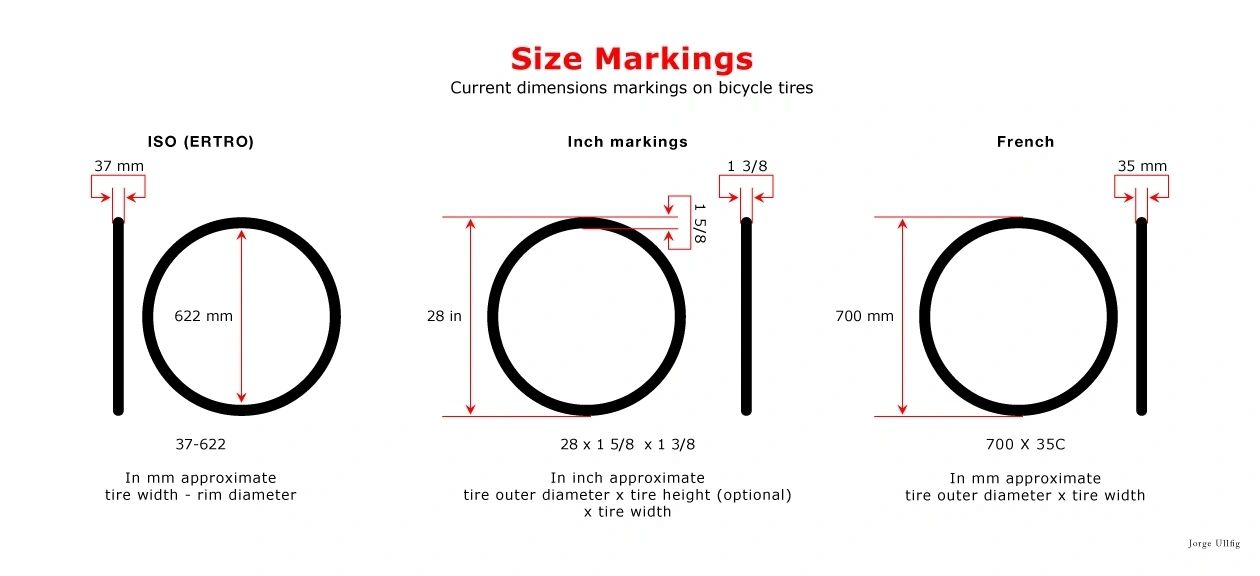 Cheap plastic is not the best material for a bike with high loads.
Cheap plastic is not the best material for a bike with high loads.
It is worth considering the possibility of installing pedals with toe clips (secure leg fixation), this will allow a heavy cyclist to use all leg muscle groups to move on a bicycle.
All parts of the bike are at risk of breakage. Gradual depreciation is natural, but cycling a very heavy person equates to extreme riding, so be prepared to repair and change consumables more often.
Partially at risk:
It's not just the right maintenance that keeps your bike from breaking down.
Good riding habits keep your bike safe and make cycling fun:
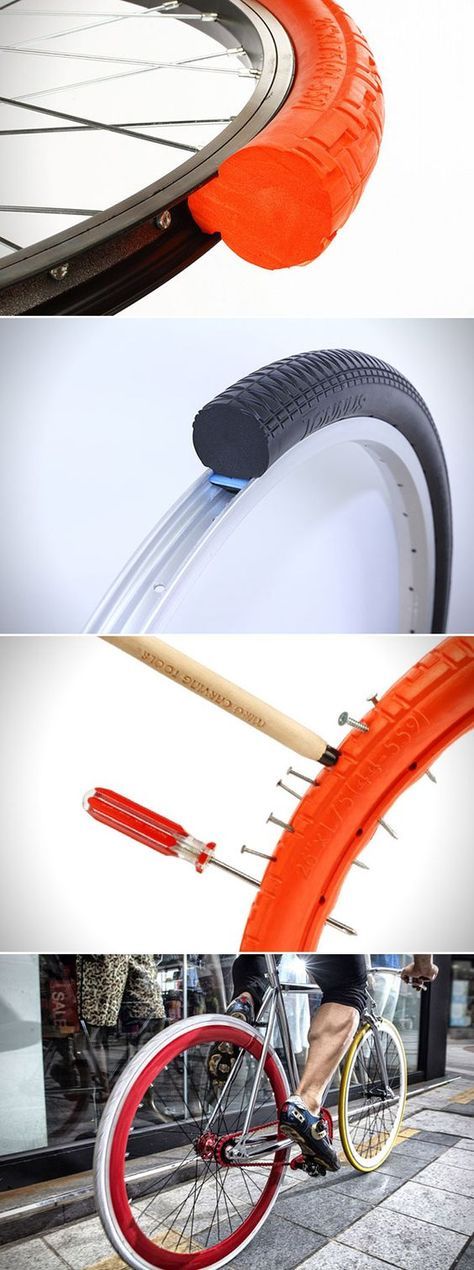 Proper posture saves energy.
Proper posture saves energy. And a general advice: think more about your hobby, develop it in your dreams and it will gradually grow.
In order to start cycling for a massive person, it is not necessary to buy a new and expensive bike. For starters, the old one is enough. You just need to follow the minimum recommendations: tighten the spokes and pump up the wheels harder. And with time and experience everything will come.
And with time and experience everything will come.
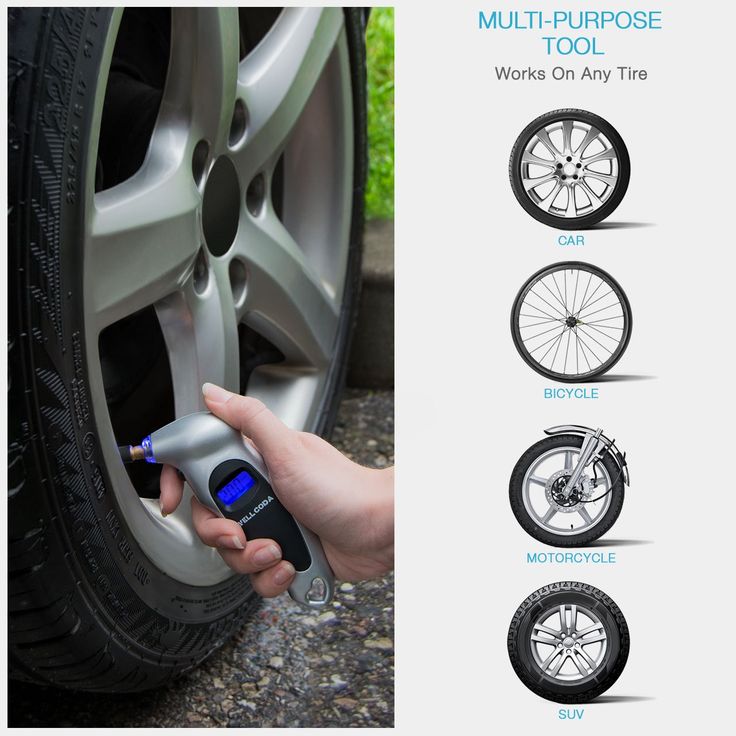 In fact, the only question is the price. According to the basic characteristics, the maximum weight of a cyclist on a standard bike is no more than 100 kg. Bicycles for big people at 150 kg are more expensive.
In fact, the only question is the price. According to the basic characteristics, the maximum weight of a cyclist on a standard bike is no more than 100 kg. Bicycles for big people at 150 kg are more expensive. Mountain bikes should be preferred as a road bike is not suitable for heavy people.
A wide selection of mountain bikes: https://www.velopiter.ru/cat/velo/0/0/4/1.htm. Interest in them is due to a reduced risk of spinal injury. Due to the high load, even a slight shaking on a rough road can result in a protrusion of the intervertebral discs or a hernia. An ergonomic back position while riding a mountain bike reduces the chance of injury.
Heavy duty bicycles must have the following specifications:
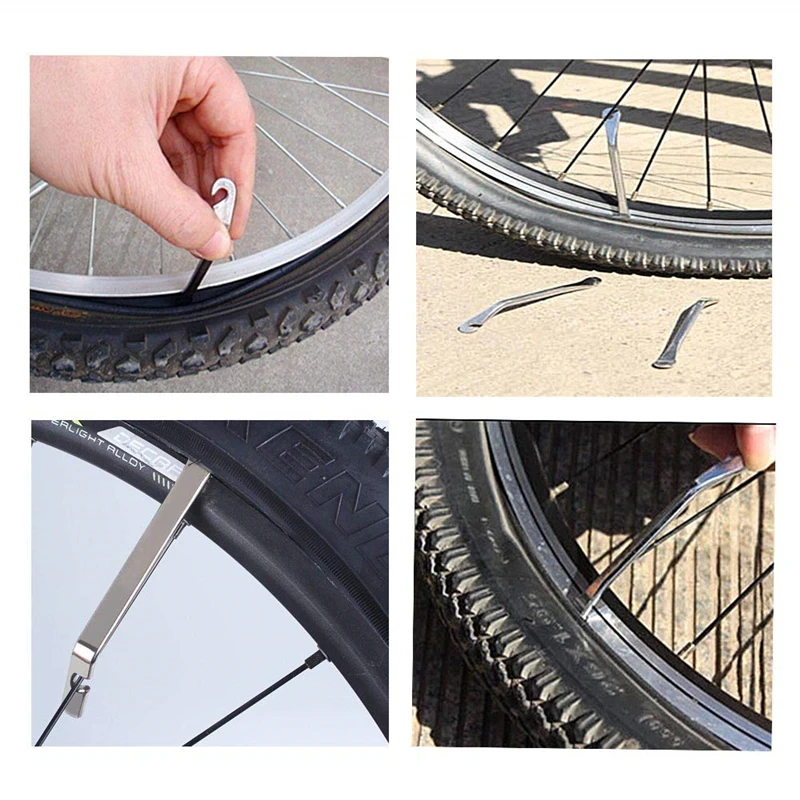

So, bicycles for heavy weight must have:
If it is almost impossible to choose a bike with a rider weighing more than 150 kg, then a medium category unit can withstand a load of up to 150 kg. It just needs some thoughtful modification. Variants of suitable models: https://www.velopiter.ru/fast/velosipedy-dlia-vesa-150-kg/1.htm
Possible breakdowns of average transport:
To avoid these troubles, when buying, you need to take into account the increased pressure on the working units.
A few additional tips:

Experienced riders know how to strengthen their two-wheeled horse and extend its life. The biggest load falls on the seat. A leather saddle with reinforced springs will help soften blows to the back and reduce pressure on the body. For example, a seat brand Brooks. Ergonomic grips will also help to ensure a comfortable ride, eliminating the flow of brushes. Special options for wheels, rims, hubs, metal pedals will also make life easier for the obese cyclist.
